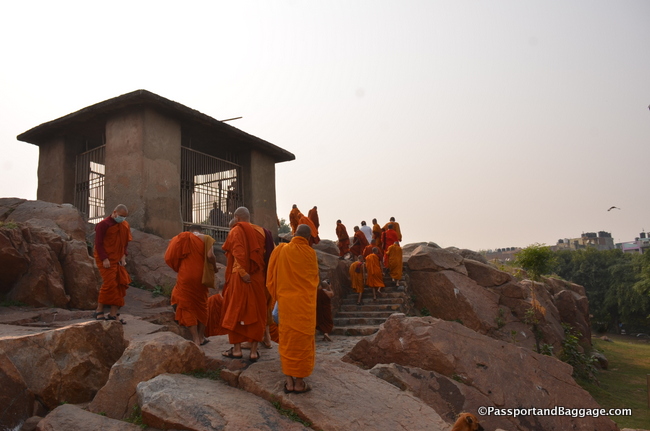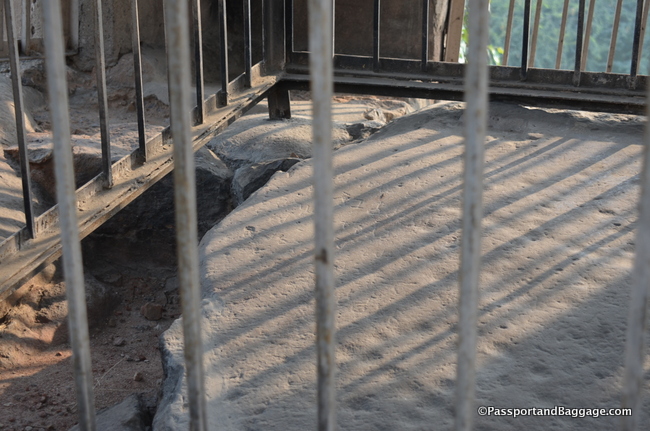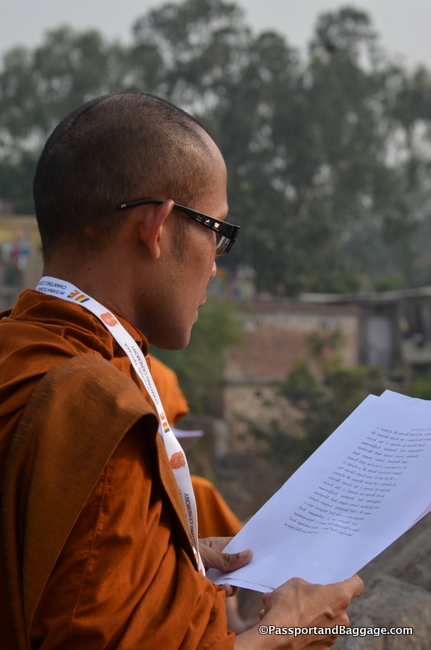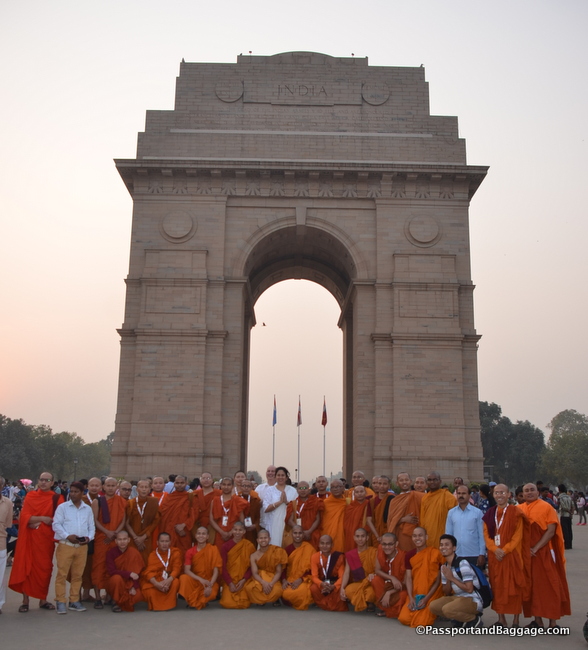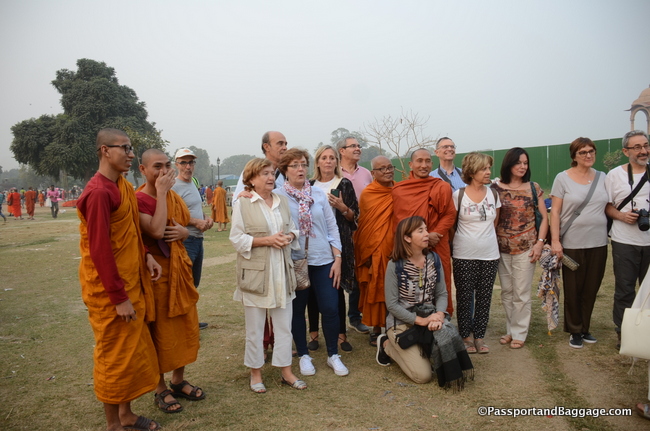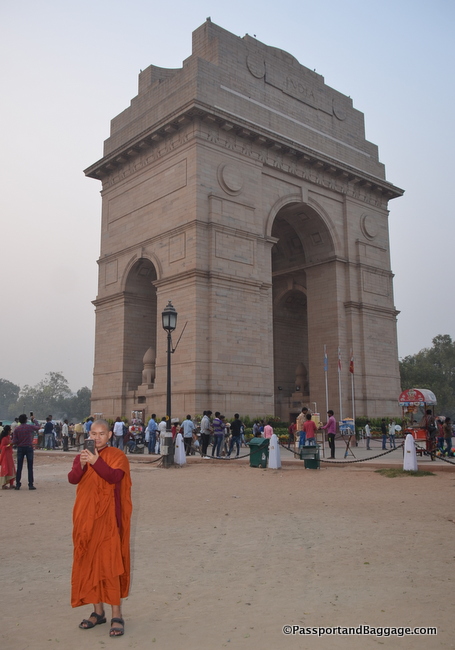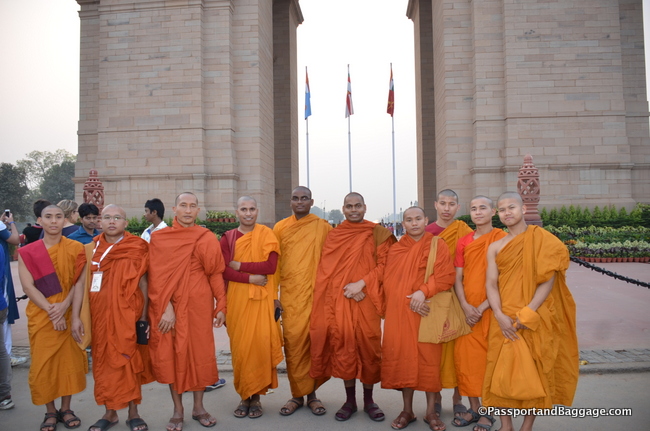November 2, 2018
Today we had an afternoon to do some sightseeing, and thanks to the abominable traffic in Delhi we were only able to squeeze in two sites.
Our first stop was an Ashokan edict found in Delhi in 1966. I have written extensively about Ashoka in this blog, but a good overview can be read here.
This edict is categorized as a “Minor edict”. It is written in Brahmi script and translated into English it reads:
It is two and half years since I became a Buddhist layman. At first no great exertion was made by me but in the last year I have drawn closer to the Buddhist order and exerted myself zealously and drawn in others to mingle with the gods. This goal is not one restricted only to let the people great to exert themselves and to the great but even a humble man who exerts himself can reach heaven. This proclamation is made for the following purpose: to encourage the humble and the great to exert themselves and to let the people who live beyond the borders of the kingdom know about it. Exertion in the cause must endure forever and it will spread further among the people so that it increases one-and-half fold.
The monks chanted the Satti Pattana while on the rock.
The rock edict was discovered by a building contractor preparing the site for a housing project. There are ten lines of writing of varying length written in Prakrit language in early Brahmi script and lacks uniformity of the aksharas (letters).
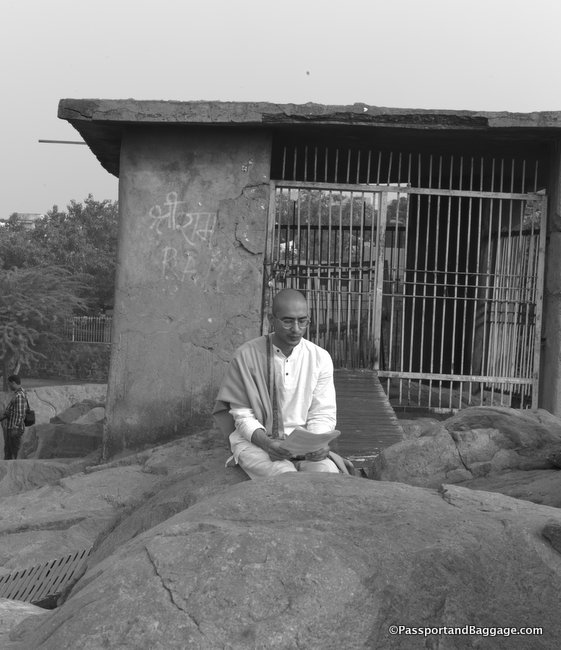 *
*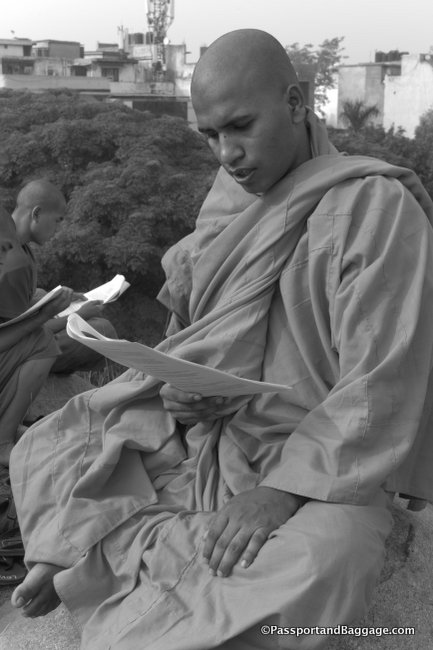 It is thought that the reason it is here is that it once sat on a trans-regional trade route of North India, an ancient trade link between the Gangetic Delta and the northwestern part of the Indian subcontinent. A second view is that it marks the site of a temple.
It is thought that the reason it is here is that it once sat on a trans-regional trade route of North India, an ancient trade link between the Gangetic Delta and the northwestern part of the Indian subcontinent. A second view is that it marks the site of a temple.
Our second stop was the India Gate, a memorial to 70,000 soldiers of the British Indian Army who died in the First World War. 13,300 servicemen’s names, including some soldiers and officers from the United Kingdom, are inscribed on the gate.
The India Gate, even though a war memorial, is in the architectural style of the triumphal arch similar to the Arch of Constantine, outside the Colosseum in Rome. Designed by Sir Edwin Lutyes, it is often compared to the Arc de Triomphe in Paris, and the Gateway of India in Mumbai.
*
If you would like to read more about sightseeing in Delhi, the city’s history or what we did last year you can do so here, in the interim, I hope you enjoyed some of the sightseeing the monks enjoyed.
